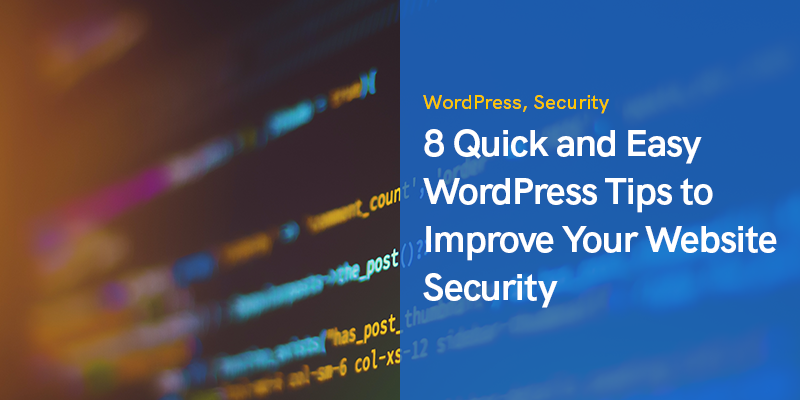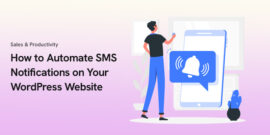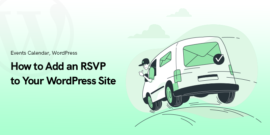
8 Quick and Easy WordPress Tips to Improve Your Website Security
A security update by Wordfence indicated that there were over 20 million attacks against half a million-plus WordPress sites in May 2020. The sheer volume of these attacks in that month alone confirms how vulnerable your site may be.
This is not to mean that the WordPress content management system is not a safe place- it is. What makes it a juicy target for attackers is most administrators' failure to adhere to the necessary WordPress security best practices.
How to Optimize Your WordPress Site for Security
Now, it's practically impossible to create and maintain a perfectly secure site. However, there are a few things that can help improve your overall security posture and reduce the risk of cyberattacks:
Choose your hosting provider wisely
Some time back, features and price were the key considerations when choosing which hosting company to go with. For most people, security came last, that is, if it made up in their list of concerns. But at a time when hacking has become so rampant, priorities have changed. Secure hosting should be your guide when choosing which hosting company to trust with your website.
There are a couple of essential security features that you should look out for when picking the best WordPress web hosting providers in 2021. These include:
- Reliable server security
- Malware scanning
- Secure server capabilities- it should be SFTP secured. Check the type of SSL certificate too.
- DDoS attacks prevention (check whether it works with a CDN company, such as Cloudflare).
- Firewall protection
- Ability to reboot manually
Secure the wp-config[.]php file
The wp-config[.]php is a core file with critical credentials and connection information that WordPress needs to store and retrieve data from the database. This information includes the localhost, name, username, and password.
The wp-config[.]php file is among the most targeted areas by malicious actors as it gives them easy access to the database where critical site content is stored. Making this file inaccessible means that you're hardening your site from the core.
Protecting the wp-config[.]php file involves moving it from its default location. Good thing, WordPress allows you to hide it outside the WordPress installation, and it will still work.
Deploy WordPress on Kubernetes
WordPress is an inherently simple platform to use for beginners and a powerful tool for developers. No wonder it's the choice for nearly 30% of the world's websites- from small individual blogs to giant corporations.
You can make your WordPress site more manageable and secure by hosting it through Docker containers orchestrated using Kubernetes. Running WordPress on Kubernetes offers you a couple of benefits, including continuous integration (CI). As a developer, CI cuts the time you take to release new updates by 10-15%.
Moreover, dockerizing your WordPress site means that only one container will be compromised in case of a vulnerability.
Transferring an established site to Docker containers might take some work. However, considering that containers are the future of hosting, we advise learning Docker and Kubernetes Security as soon as you can.
Install a WordPress security plugin
The advice on whether you need a WordPress security plugin is all over the place. Unless you have one of those high-risk sites that demand protection from all fronts, it's possible to secure your site without engaging a dedicated WordPress security plugin.
However, if you take your site's security seriously (which we bet you do), a WordPress security plugin is something you'll need to consider. The best WordPress security plugins, such as Sucuri and Wordfence, offer an additional line of defense to your site by hardening your login page, scanning your site for malware, and creating a firewall.
Make those passwords tough!
Passwords are intended to be the first line of defense against hackers and malicious. But it's quite surprising that most WordPress website owners still go with simple and easy-to-guess passwords, such as 123456, QWERTY, and Password. ‘iloveyou' isn't strong either.
When crafting a password for your site, ensure that it's long and complex. Combining letters, numbers, and characters, such as parenthesis, brackets, and percent sign will make it even harder and more time-consuming for attackers to guess your passwords.
Importantly, avoid using the same password for different sites and devices or better yet, you could look into passwordless solutions such as passkeys.
The consequences can be devastating if the password is compromised.
Enable WordPress 2-factor authentication
Hackers and malicious actors are always at the top of their password-guessing game. Despite the never-ending campaigns on the importance of using tough login credentials, it's not a surprise that password-related attacks continue to rise.
Enforcing ultra-strong passwords for your WordPress sites alone is not enough. Implementing a 2-factor authentication is crucial as it creates an extra verification stage where the users have to give a piece of information only known to them. This can be a code or text sent via the phone or email, a biometric proof, such as a face scan, or a time-based code from another app.
Disable file editing
By default, administrator users can open Appearance >> Theme Editor and use this editing plugin to modify any files they wish right from their WordPress panel. This can be really useful, but it also carries a potentially high risk.
In case an attacker broke into your dashboard, having this file editing option enabled gives them absolute access to all codes on your website. If you rarely make changes to your files, this plugin may not be necessary to you or other users.
Disabling this plugin is simple and straightforward. You only need to add the text define(‘DISALLOW_FILE_EDIT', true); at the end of the wp-config[.]php file.
Avoid nulled themes like the plague
When searching for the best WordPress plugins, you'll probably be looking for a plugin that offers great features while cutting on cost. Nulled WordPress themes are a favorite option for most people. Nulled themes refer to pirated copies of premium WordPress themes often sold at a fraction of the original cost.
Although the promise of benefiting from premium features without spending a lot is tempting, please don't fall for them. Nulled themes and plugins are among the leading reasons why most WordPress sites are hacked today. This is because these products often carry malware that easily spreads across different files in your site, making it difficult to detect and fix.
These cracked themes and plugins also have malicious codes, which hackers use to steal your credential information, such as email address, username, and passwords, and make it available for other actors on the dark web.
Recommended Posts

The Ultimate Guide to Effortlessly Automate SMS Notifications on Your WordPress Website in 2025
April 4, 2025

How to Create an Event Booking WordPress Website in 2025
February 24, 2025

How to Add an RSVP to Your WordPress Site in 2025
February 23, 2025
